Home
The Mailjet Blog
Development
How to Pipe Mailjet Data to a Data Warehouse — and Why You Should %%sep%% Mailjet Blog
Development
How to pipe Mailjet data to a data warehouse and why you should
As the central hub for your team's messages, customers, and apps, Mailjet offers all the benefits of group email management and collaboration. But beyond the obvious functionality, the Mailjet platform is chock-full of data — and you can use that data to surface valuable insights for your team.

PUBLISHED ON
As the central hub for your team's messages, customers, and apps, Mailjet offers all the benefits of group email management and collaboration. But beyond the obvious functionality, the Mailjet platform is chock-full of data — and you can use that data to surface valuable insights for your team.
In many organizations, corporate data lives in silo’s that don't talk to each other. In addition to Mailjet, perhaps you use a payment platform like Stripe or Square, advertising networks like Google Ads or Facebook Ads, an analytics platform like Google Analytics, customer service software like Intercom or Zendesk, and in-house databases. You track information for the same customers in all these platforms, but how can you get a full picture of every way your customers are interacting with your business?
The best way to correlate that information is to create a data warehouse that consolidates all of your data into a single location. Most businesses nowadays use cloud data warehouses to do this.
Table of contents
07
Wrap up
Three tiers of the data analytics architecture
Data sources like Mailjet form a foundation for a data analytics stack that comprises three additional tiers: ETL (extract, transform, load) software, data warehouse, and business intelligence (BI) software.
Stitch provides a simple, powerful ETL service for businesses of all sizes. Signup is simple — you can be moving data from one or more sources to a data warehouse in five minutes.
The last few years have seen the emergence of cloud-native data warehouses like Amazon Redshift, Google BigQuery, Snowflake, and Microsoft Azure SQL Data Warehouse. Because they run on cloud infrastructure that scales quickly and cost-effectively to meet performance demands, they can handle transformation using the same hardware on which the data warehouse runs.
Finally, to unlock the value of your data, you can connect a BI or data visualization tool to your data warehouse and create reports that analyze data from multiple sources, which you can share via browser-based dashboards.
Setting up a data warehouse
Let's set up a three-tiered data analytics stack, starting with the data warehouse. If your organization generates business analytics reports, chances are you already have an account with one of these data warehouses, but if you don't, choose one that meets your needs. If you choose Redshift, BigQuery, Snowflake, Azure SQL Data Warehouse, or one of the other destinations Stitch supports, you can also follow the setup steps for your data warehouse in the Stitch documentation.
Setting up Stitch for ETL
The next step is setting up an ETL pipeline to move data from Mailjet and other data sources to the data warehouse. Stitch makes extracting data from a source and loading it into a data warehouse easy. To get started, visit Stitch's signup page, enter your email address, then enter your name and a password.
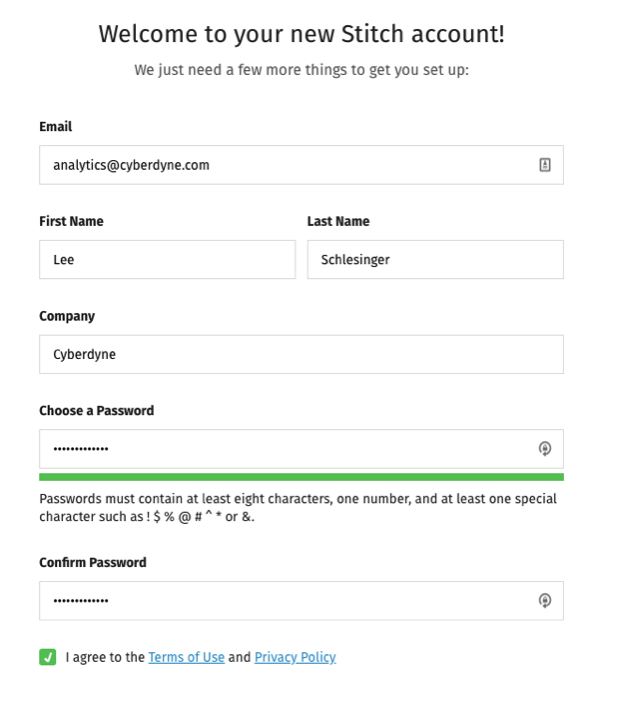
Add an integration
Next, add Mailjet as an integration within Stitch. Click on the Mailjet icon to get started:
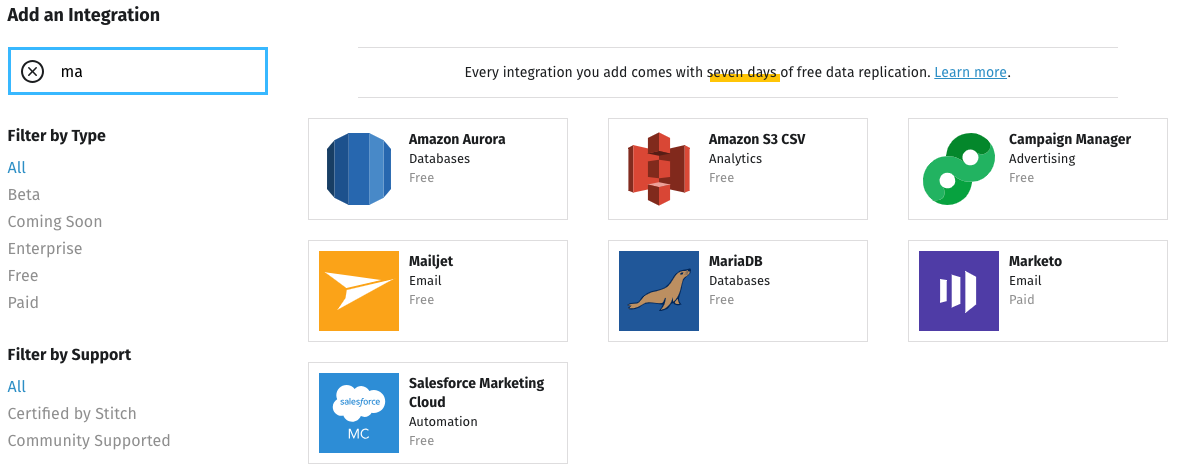
The next screen prompts for a name for the integration. This name will display on the Stitch Dashboard for the integration, and it’ll also be used to create the schema in your destination. Choose something descriptive but not too long.
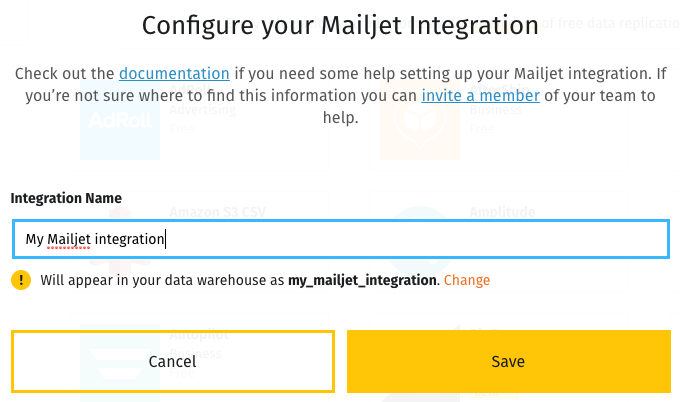
When you click Save, Stitch will generate a webhook token URL:
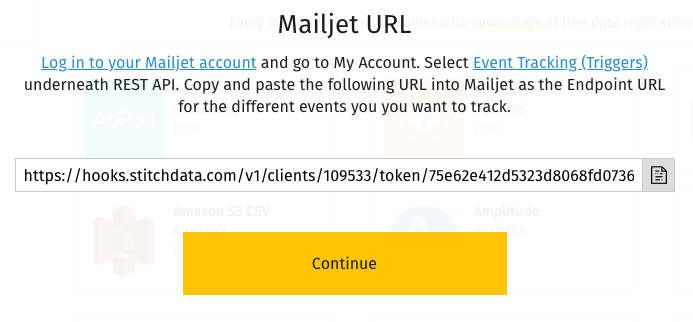
Follow the instructions on the screen to paste the URL into Mailjet as an endpoint for the events you want to track. Once you save it, all future events of the types you've selected will be replicated to your data warehouse — but first you have to connect your data warehouse to Stitch as a destination.
Click Continue, then All Done, to get back to the Stitch dashboard. Scroll up to the top of the screen and click on Destination.
Add a destination
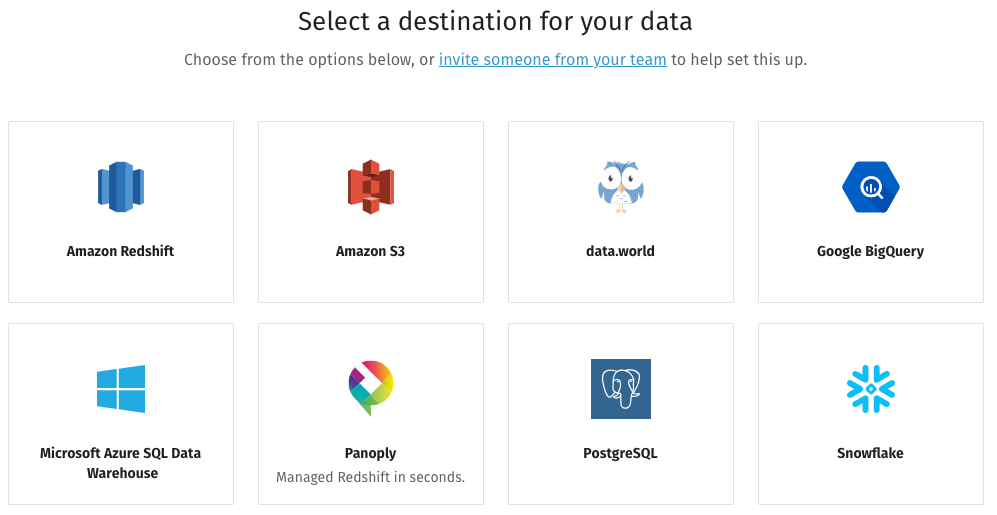
Suppose you've chosen an Amazon Redshift data warehouse. Click on the Redshift icon, enter your credentials, then click Check and Save.

Now all the pieces are in place, and your data is ready to flow.

When you visit your Stitch dashboard, you'll see that your integration is marked Active, Continuously Replicated.
From the dashboard you can also add integrations from other data sources. The Stitch documentation walks through the process for each one.
Connecting BI software to your data warehouse
The final stage of the process is connecting an analytics platform to your data warehouse. If you don't already use BI software, you have dozens to choose from, including such popular options as Tableau, Microsoft Power BI, Google Data Studio, and Looker.
Wrap up
Now you have all the tools you need to see, for example, which customers need the most support or which are the most profitable, and you can tell whether you've been communicating with them at an optimal cadence or targeting ads at the best cohort.
That's all there is to it. Using an ETL tool like Stitch to move data from Mailjet and other sources into a data warehouse lets you leverage the power of BI tools to correlate and report on all of your valuable data.
***
This post was written by Lee Schlesinger, Content Marketing Manager at Stitch.





